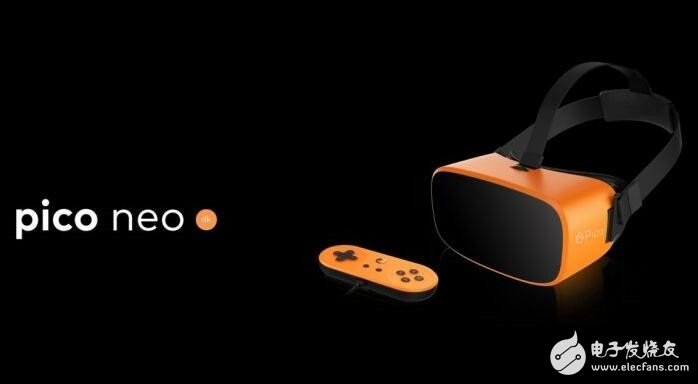VR is a super hot item for consumer electronics this year. The upstream and downstream of the mobile phone industry have set out to find the next computing platform. VR's imagination and maturity of this story are even ahead of drones and robots in recent years due to strong computing demands, rich software and hardware surrounding ecology, and ubiquitous application scenarios.
From the perspective of the already disclosed actions, Qualcomm is currently one of the most active manufacturers of VR. Through two partners in China (Gool Acoustics and Zhongke Chuangda), Qualcomm is helping several mainstream mobile phone manufacturers and a group of entrepreneurial teams to create the most complete mobile VR all-in-one device in the form of hardware and software solutions.

Just this month, the domestic virtual reality startup team Pico released the mobile VR all-in-one Pico Neo with the support of Qualcomm and Goer Acoustics. The Pico Neo became the first mobile VR all-in-one with the Snapdragon 820.
On the other hand, this year's PC VR's major manufacturers Oculus Rift, HTC Vive and PSVR will have or have already launched a consumer version, and mobile phone manufacturers have followed the example of Gear VR. So in this case, why does Qualcomm and Pico insist on optimistic mobile VR? On the first day of the just-concluded GMIC, the two had just one conversation.
The value of VR will exceed the TV industry, and mobile VR will be the mainstream.Pico CEO Zhou Hongwei told us that the VR industry will develop at a high speed in the next five years; perhaps by 2020, VR will become a billion-dollar industry. What is the concept of hundreds of billions of dollars? Today's notebook industry is about $110 billion, and $110 billion means more than the TV industry.
Zhou Hongwei also said that today's VR is a coexistence of PC VR, mobile VR all-in-one and mobile VR.
PCs have a strong processing power, and application developers have accumulated on the platform, which will stimulate early developers to develop content. Everyone has a mobile phone, and the glasses case is a VR that everyone can afford. It is very easy to mass popularize.
"But we still believe that the mobile VR all-in-one will be the main form of future VR products." Zhou Hongwei mentioned that in 2016, especially domestic enterprises, many of them are investing in the development of one machine. He cited several reasons:
1. Mobility; not limited to desks or offices, where users can consume VR content in the living room, bedroom or even bathroom.
2. Portability; portability is self-evident compared to PC VR.
3. Comfort; no cable interference from PC VR, and a more balanced design than a mobile phone in the glasses case.
4. Mobile VR itself can integrate more interactions than PC VR.
5. Low cost; due to the large-scale application of mobile phone chips and sensors, it will cost less than a PC VR plus a strong PC.
Both Qualcomm and Pico have shared that performance, portability and cost are themselves a balance, and they are all looking for this optimal solution through the mobile VR all-in-one.
What factors are driving the explosion of mobile VR?In March of this year, at GDC, Qualcomm released the DX-optimized SDK for Snapdragon 820. Qualcomm VR SDK developers can call 820 more functions to optimize the experience of VR content; for example: DSP fusion sensor, speed of light motion, stereo rendering and Lens correction, VR layering, power management, and more. Qualcomm will deploy this SDK to more Android phones.
Pico's Zhou Hongwei also mentioned that Android N, which will be released by Google this year, will be optimized for VR. Regardless of Qualcomm's VR SDK or Android N, it will promote the establishment of the mobile VR standard.

Pico CEO Zhou Hongwei and Qualcomm Senior Product Director Hugo Swart talk at GMIC
So what are the capabilities of the existing Qualcomm platform's mobile VR? Hugo Swart, Senior Product Director of Qualcomm, told us:
VR needs to be immersive and has three pillars -
The first is that the visual effect is very good and there must be a sense of reality.
The second is sound, the sound must be synchronized with what you see, blending into one.
The third is interactivity.
At these three points, the Snapdragon 820 supports resolutions of 3200&TImes; 1800, frame rate of 60 fps, and drives 360-degree 4K images through the GPU and video acceleration engine; while they also reserve focus rendering technology, through concentration The way to render several focus segments enhances the immersion of the image; in terms of sound effects, the sound output to the user's ear is precisely adjusted by the close cooperation with the sensor.
Correspondingly, the Pico Neo just released uses a 2K 90hz AMOLED screen with an image display delay of less than 20ms and is equipped with a Dive Sound 3D audio system and a Dive Sense vibration feedback system; the Pico Neo is also equipped with a position tracking component. You can track the position of your head and hands. The improvement of these capabilities can help developers produce higher levels of content.
Of course, for mobile VR, it is still very early. On the one hand, Qualcomm will continue to launch more mobile VR devices based on the Opteron platform; vertically, Pico will also invite more hardware partners and content developers to improve the Neo experience and content.
Coincidentally, almost the same day, Samsung also announced that it is developing a mobile VR all-in-one. It seems that PC VR and mobile phone boxes have already set up a prototype of supply chain and content ecology. Can mobile VR all-in-one come to the fore? let us wait and see.
Network Accessories,Wifi Adapter,Fiber Optic Network Components,Splitter Fiber Optic
Cixi Dani Plastic Products Co.,Ltd , https://www.cxdnplastic.com